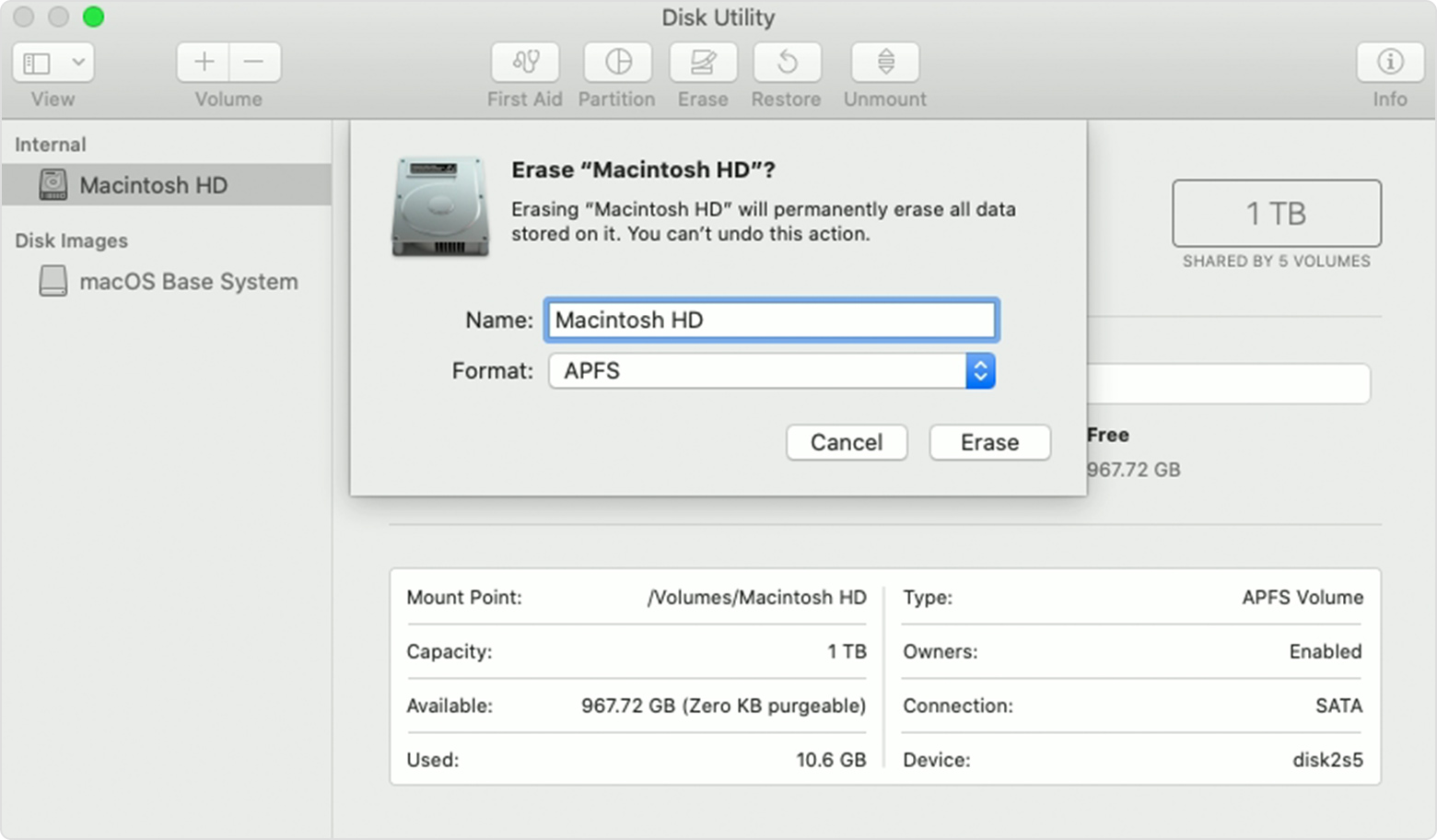


The volume representing your startup disk is Macintosh HD, unless you renamed it. Make sure that the sidebar in Disk Utility shows the name of your startup disk.Select Disk Utility from the Utilities window in macOS Recovery.By default it's the disk built into your Mac, named Macintosh HD. If you're selling, giving away, or trading in your Mac, you should erase your startup disk. Your startup disk is the disk (volume) that your Mac started up from. Proceed based on whether you're erasing your startup disk or some other disk. Before continuing, make sure that you have a backup of any files that you want to keep. Use Disk Utility to erase (format) a hard disk, SSD, flash drive, or other storage device.Įrasing a disk or volume permanently deletes all of its files.


 0 kommentar(er)
0 kommentar(er)
